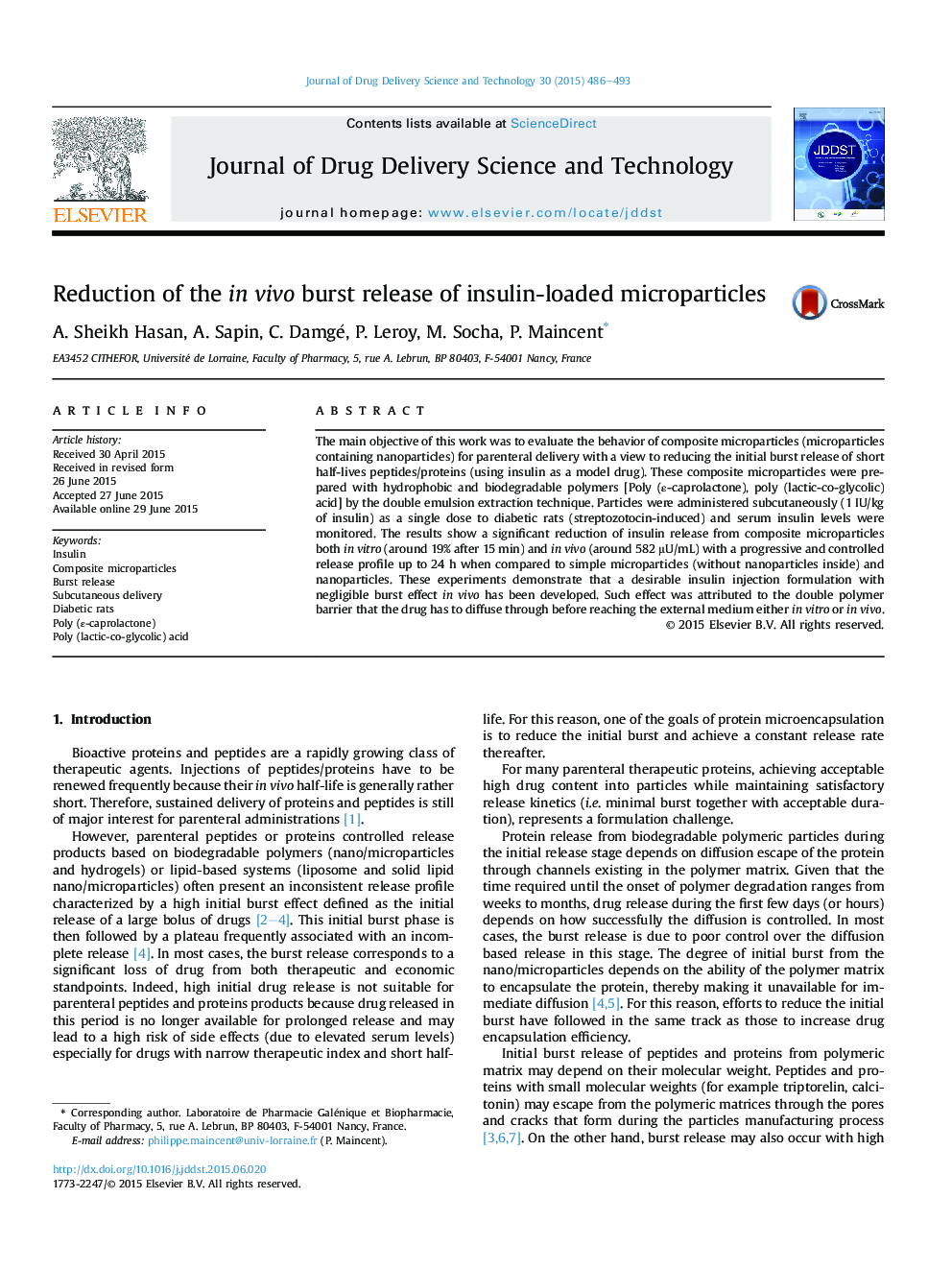| Article ID | Journal | Published Year | Pages | File Type |
|---|---|---|---|---|
| 2483123 | Journal of Drug Delivery Science and Technology | 2015 | 8 Pages |
The main objective of this work was to evaluate the behavior of composite microparticles (microparticles containing nanoparticles) for parenteral delivery with a view to reducing the initial burst release of short half-lives peptides/proteins (using insulin as a model drug). These composite microparticles were prepared with hydrophobic and biodegradable polymers [Poly (ε-caprolactone), poly (lactic-co-glycolic) acid] by the double emulsion extraction technique. Particles were administered subcutaneously (1 IU/kg of insulin) as a single dose to diabetic rats (streptozotocin-induced) and serum insulin levels were monitored. The results show a significant reduction of insulin release from composite microparticles both in vitro (around 19% after 15 min) and in vivo (around 582 μU/mL) with a progressive and controlled release profile up to 24 h when compared to simple microparticles (without nanoparticles inside) and nanoparticles. These experiments demonstrate that a desirable insulin injection formulation with negligible burst effect in vivo has been developed. Such effect was attributed to the double polymer barrier that the drug has to diffuse through before reaching the external medium either in vitro or in vivo.
Graphical abstractFigure optionsDownload full-size imageDownload as PowerPoint slide
